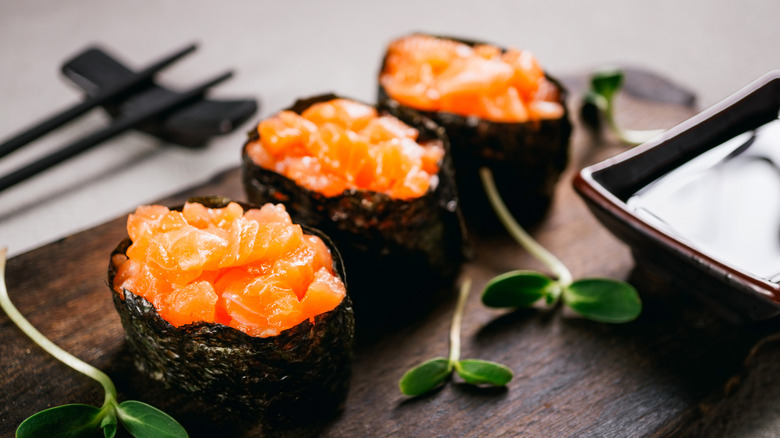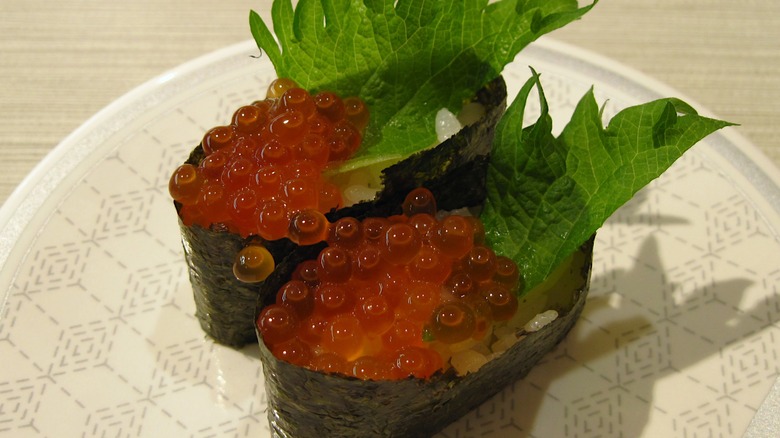The Unique Structure Of Gunkan-Maki Sushi Keeps Toppings In Place
Sushi lovers have a man named Hanaya Yohei to thank for inventing what many would consider to be one of the world's most popular foods. While the origin of sushi included preserved fish and rice, it was Yohei who first set up a stall in Edo — or what is now Tokyo — in 19th century Japan, in order to sell balls of vinegared rice on which was pressed a thin slice of raw, fresh fish. His stall was popular with travelers who moved across the Sumida River, many having developed a taste for what would become the type of sushi known as nigiri sushi.
But the structure of nigiri was such that no ingredients other than sliced seafood could be used, because the rice ball couldn't support anything else. To fix that, a chef named Hisaji Imada, who owned Tokyo's Kyubey sushi restaurant, came up with a way of loosely wrapping sushi rice with a taller sheet of seaweed, or nori, in 1941. This gave the sushi a raised edge that could contain more delicate or unruly fillings like flying fish or salmon roe. The invention, which came about more than a hundred years after nigiri was invented, was dubbed gunkan-maki or "battleship wrap." In other types of maki, the seaweed is wrapped tightly around the rice, with no space to hold toppings.
Gunkan-maki is a versatile sushi that can be topped many ways
The invention of the gunkan-maki has allowed sushi chefs on both sides of the Pacific Ocean to get inventive with filling. Today, gunkan-maki can come with a variety of toppings, including salmon roe, sweet corn, spring onion leaves, and finely chopped fish such as squid or tuna. This specially-shaped sushi can also be filled with different types of salads like seafood salad, cucumber salad, or avocado-corn salad. Gunkan-maki doesn't have to be wrapped in seaweed either — more enterprising chefs have been known to use thin slices of smoked salmon. Gunkan-maki is easy enough to make at home and can be customized any way you might like.
There is just one warning — the nori used to make battleship-style sushi does tend to absorb moisture from vinegared sushi rice, and this moisture changes both the texture and the flavor of the seaweed. As such, gunkan-maki needs to be consumed as quickly as possible, or as soon as it's made and served.

